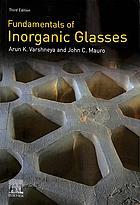Periodic Properties and Chemical bonding chapter 1
INTRODUCTION
Chemists have long tried to find patterns in the properties of the elements. Some were discovered fairly readily; for example, elements were classified as metals, non-metals, and many of their compounds as acids, alkalis, or salts.
Table 1.1 Typical Properties of Metals and Non-metals
MetalsNon-metals
Appearance and propertiesSolids, some with high melting points; lustrous, malleable and ductile
Conduction of heat and electricityVery good
Compounds
Ionic compounds with non-metals; alloys with other metals
Gases, or solids with low melting points
Poor
Ionic compounds with metals; covalent compounds with other non-metals
ChargeonionsPositiveNegative
Chemical nature
Electronegativity
Reducing agents
Low
Oxidizingagents
High
However, it was widely believed that there had to be an underlying reason for the patterns.
1. Prout’s Hypothesis
One of the first suggestions was due to Prout. Prout’s hypothesis was that all elements were made from a whole number of hydrogen atoms. (Be careful here: an atom’ in Prout’s time was a very different thing to our understanding of the word.) According to him the atomic masses of the elements should be a whole number of times that of hydrogen, i.e., they should be integers. Unfortunately, from Prout’s point of view, the results of experiments showed that the atomic masses of many elements were not integers.
2. Dobereiner’s Triads
According to Dobereiner, when elements of same properties are kept in the increasing order of their atomic weights, the atomic weight of middle element is equal to the mean atomic weight of remaining two elements. Such a group of elements is called Dobereiner’s triad.
Dobereiner could arrange only a few elements as triads and there are some such elements present in a triad, whose atomic weights are approximately equal, e.g.,
Ru Rh Pd
Therefore, this hypothesis was not acceptable for all elements.
3. The Telluric Helix
It was in 1862, that a periodic classification of the elements was developed that approached the idea we have today. At that time A.E. de Chancourtois, a professor of Geology at the Ecole des Mines in Paris presented an account of his telluric helix in which he indicated the relative properties of elements and their atomic weights.
He used a vertical cylinder with 16 equidistant lines on its surface, the lines lying parallel to the axes. Then he drew a helix at 45 degree to the axis and arranged the elements on the spiral in the order of their increasing atomic weights. In this manner, elements that differed from each other in atomic weight by 16 or multiples of 16 fell very nearly on the same vertical line. In addition to the 16 vertical lines, de Chancourtois felt that other connecting lines could be drawn, and that all elements lying on such lines were related in some manner. His arrangement resulted in the proposal by de Chancourtois that the properties of the elements are the properties of numbers.
4. Newland’s Rule of Octave
A major attempt at making a link was made by new lands in 1864 (Table 1.2). He grouped elements into sets of eight and claimed that every eighth element in the pattern was chemically similar. Newlands’ law of octaves was largely ignored, or at best treated with mild amusement.
The first thorough attempt at relating chemical properties to atomic masses was made by the Russian.
Table 1.2 Examples of Newlands’ Octaves*
16Cu 23 Rb 30 G3Mg 10 Ca 17 Zn24 Sr 31 Bo 4Al
*This is part of a table that John Newlands presented in a talk he gave to the Chemical Society on 9 March 1866. The talk was entitled The Law of Octaves, and the Causes of Numerical Relations among the Atomic Weights’. (You might like to work out which elements G, Bo, etc., stand for.) Here is part of an account of the talk:
The author claims the discovery of a law according to which the elements analogous in their properties exhibit peculiar relationships, similar to those subsisting in music between a note and its octave.... Professor G. F. Foster humorously enquired of Mr. Newlands whether he had ever examined the elements according to the order of their initial letters?
Newlands was not at all happy about the credit that went to Mendeleeff over the discovery of the periodic law. In 1884 Newlands wrote: Having been the first to publish the existence of the periodic law more than nineteen years ago, I feel, under existing circumstances, compelled to assert my priority in this matter.... As a matter of simple justice, and in the interest of all true workers in science, both theoretical and practical, it is right that the originator of any proposal or discovery should have the credit of his labour.
5. Lothar Meyer’s Volume Curves
The graphs of atomic volumes against atomic weights are known as Lothar Meyer volume curves.
(i) Lothar Meyer plotted a graph between atomic weight and atomic volume (i.e., atomic weight in solid state/ density).
(ii) Elements with similar properties occupied the similar positions on the graph.
(iii) Strong electropositive elements of IA except Li, all others Na, K, Rb, Cs etc., occupied the top position on the graph.
Fig. 1.1 Atomic volume versus atomic number curve
(iv) IIA group elements Be, Mg, Ca, Sr, Ba etc., occupied the positions on the ascending part of the graph.
(v) Inert gases except He occupied the positions on the descending part of the graph.
(vi) Halogens also occupied the descending part of the graph.
n Transition elements have very small volumes and therefore these are present at the bottoms of the curve metals have highest atomic volumes.
6 (a) Mendeleef’s Periodic Table
n Periodic table is based on atomic weight.
n In the periodic table, the horizontal lines are called periods and the vertical lines are called groups.
n The periodic table consists of seven periods and nine groups (The earlier periodic table had only 8 groups. The noble gases were added later in the zero group because these were not discovered when Mendeleef put forward his periodic table.
n All the groups (except VIII and Zero groups) are divided into subgroups A and B.
n 2, 8, 18 and 32 are called magic numbers.
(b) Merits of Mendeleef’s Periodic Table
n Classification of elements then known, was done for the first time and the elements having similar properties were kept in the same group.
n It encouraged research and led to discovery of newer elements.
n Mendeleef had even predicted the properties of many elements not discovered at that time. This helped in the discovery of these elements. For example, Mendeleef predicted the properties of the following elements:
(a) ka-boron—This was later called scandium (Sc)
(b) Eka-aluminium—This was later called gallium (Ga)
(c) Eka-silicon—This was later called germanium (Ge)
n Atomic weight of elements were corrected. Atomic weight of Be was calculated to be 3 × 4.5 = 13.5 by considering its valency 3. Mendeleef calculated it 2 × 4.5 = 9.
(c) Defects of Mendeleef’s Periodic Table
(1) Position of Hydrogen: Hydrogen resembles alkali metals and halogens in its properties. Hence, its position was not sure.
(2) Position of Isotopes: The isotopes have different atomic weights and the periodic table is based on atomic weights. Therefore, isotopes should get different places in the periodic table on the basis of atomic weights.
(3) The periodic table is not fully based on increasing order of atomic weights.
(4) It is not proper to place together the elements having differing properties, such as coinage metals (Cu, Ag and Au) with alkali metals; Zn, Cd and Hg with alkaline earth metals and metal like Mn with halogens. Similarly, Pt and Au having similar properties have been placed in different groups.
(5) There is no indication whether lanthanides and actinides are associated with group IIIA or group IIIB.
(6) Position of Isobars: These elements have different groups when mass remains same.
(7) Lot of stress was given to valency of elements.
M OD e RN Pe RIODIC Law a ND M OD e RN Pe RIODIC Tab L e
n Mosley proved that the square root of frequency of the rays, which are obtained from a metal on showering high velocity electrons is proportional to the nuclear charge of the atom. This can be represented by the following expression. = a (Z–b) where Z is nuclear charge on the atom and a and b are constants.
n The nuclear charge on an atom is equal to the atomic number.
n According to modern periodic law, “The properties of elements are the periodic functions of their atomic numbers”
Modern Periodic Table
n On the basis of the modern periodic law, a scientist named Bohr proposed a long form of periodic table that was prepared by Rang and Warner.
n In the periodic table, the horizontal lines are periods and the vertical lines are groups.
n The periodic table has a total of seven periods and 18 groups. But according to CAS system, the number of groups is 16, because the eighth group has been divided into three groups.
n There are two elements in the first period eight elements in each of the second and third periods, eighteen elements in each of the fourth and fifth period thirty two elements in the sixth period and only nineteen elements till now in the seventh period. Total 105 elements have been discovered so far.
n The first period is very short period, second and third are short periods fourth and fifth are long periods sixth is very long period, while the seventh is incomplete period.
n The lanthanides (Elements from atomic numbers 58 to 71) and actinides (elements from atomic numbers 90 to 103) are included in the sixth and seventh periods through these have been kept outside the periodic table.
n Period—The details about the seven periods are as follows.
(i) Each period starts with an alkali metal whose outermost electronic configuration is ns1
(ii) Each period ends with a noble gas of outermost electronic configuration ns2np6 except He. The electronic configuration of He is 1s2
(iii) The number of elements in a period is equal to the number of necessary electrons to acquire ns2np6 configuration in the outermost shell of first element (alkali metal) of the period. First period contains two elements.
(v) The number of elements in each period may be determined by the number of electrons in a stable configuration as under
Sixth
electronic basis for the Periodic Classification
With a better understanding of the part that the electron plays great role in the properties of the elements, a corresponding understanding of the periodic system came about.
On the basis of electronic configuration, the elements may be divided into four groups:
s-block elements
n The elements of the periodic table in which the last electron enters in s-orbital, are called s-block elements.
n s-orbital can accommodate a maximum of two electrons.
n Their general formulae are ns1 andns2 respectively, where, n = (1 to 7).
n I A group elements are known as alkali metals because they react with water to form alkali. II A group elements are known as alkaline earth metals because their oxides react with water to form alkali and these are found in the soil or earth.
n The total number of s block elements are 14.
n Fr87andRa88 are radioactive elements while H and He are gaseous elements.
n Cs and Fr are liquid elements belonging to s-block.
p-block elements
n The elements of the periodic table in which the last electron gets filled up in the p-orbital, called p-block elements.
n A p-orbital can accommodate a maximum of six electrons. Therefore, p-block elements are divided into six groups which are III A, IV A, V A, VI A, VII A and zero groups.
n The general formulae of p block elements are ns2 p1–6 (where, n = 2 to 6)
n The zero group elements having general formula ns2p6 are inert, because their energy levels are fully filled.
n The total number of p block elements in the periodic table is 30 (excluding He).
n There are nine gaseous elements (Ne, Ar, Kr, Xe, Rn, F2, Cl2, O2andN2) belonging to p-block. Gallium (Ga) and bromine (Br) are liquids.
n The step-like thick lines drawn in the periodic table in the p-block divides elements into metals nonmetals and metalloids.
d-block elements
n The elements of the periodic table in which the last electron gets filled up in the d orbital, called d block elements.
n The d block elements are placed in groups named IIIB, IV B, V B, VI B, VII B, VIII, I B and II B.
n In d block elements, the electron gets filled up in the d orbital of the penultimate shell. That is why, these elements are known as transition elements.
n Though the total number of d block elements is 33 in the periodic table but there are only 30 transition elements. Because only those elements are transition in which d orbital is partially filled.
n The general formula of these elements is (n–1)s2, p6, d1–10 ns1–2 where n = 4 to 7.
n All of these elements are metals.
n Out of all the d block elements mercury is the only liquid element.
f-block elements
n The elements of the periodic table in which the last electron gets filled up in the f orbital, called f block elements.
n The f block elements are from atomic number 58 to 71 and from 90 to 103.
n The lanthanides occur in nature in low abundance and therefore, these are called rare earth elements.
n Thereare28 f block elements in the periodic table.
n The elements from atomic number 58 to 71 are called lanthanides because they come after lanthanum (57). The elements from 90 to 103 are called actinides because they come after actinium (89).
n All the actinide elements are radioactive.
n All the elements after atomic number 92 (i.e., U92) are transuranic elements.
n The general formula of these elements is (n–2)s2 p6 d10 f(1–14) (n–1)s2 p6 d0–1 ns2 where n = 6 and 7.
Fig. 1.2 Long form of the periodic table of the elements with their atomic numbers and ground state outer electronic configurations. The groups are numbered 1-18 in accordance with the 1984 IUPAC recommendations. This notation replaces the old numbering scheme of IA-VIIA, VIII, IB-VIIB and 0 for the elements
Nomenclature of elements with atomic Numbers > 100
Thenaming of the new elements had been traditionally privilege of the discoverer (or discovers) and the suggested name was ratified by the IUPAC. In recent years, this has led to some controversy. The new elements with very high atomic numbers are so unstable that only minute quantities, sometimes only a few atoms of them are obtained. Their synthesis and characterisation, therefore, require highly sophisticated costly equipment and laboratory. Such work is carried out with competitive spirit only in some laboratories in the world. Scientists, before collecting the reliable data on the new element, at times get tempted to claim for its discovery. For example, both American and Soviet scientists claimed credit for discovering element 104. The Americans named it Rutherford turn whereas Soviets named it Kurchatovium. To avoid such problems, the IUPAC has made recommendation that until a new element’s discovery is proved, and its name is officially recognized, a systematic nomenclature be derived directly from the atomic number of the element using the numerical roots for O and numbers 1-9. These are shown in table. The roots are put together in order of digits which make up the atomic number and “ium” is added at the end. The IUPAC names of the elements with Z above 100 are shown in the table.
Digit 0 1 234 56 789
Name nil unbi tri quadpent hex septoct enn
Abbreviation n ub t qp hsoe
Table 1.3 Nomenclature of Elements with Atomic Number Above 100
AtomicnumberNameSymbolIUPACofficialnameIUPACsymbol
101UnniluniumUnuMendelevium Md
102UnnibiumUnbNobelium No
103UnniltriumUntLawrencium Lr
104UnnilquadiumUnqRutherfordium Rf
105UnnilpentiumUnpDubnium Db
106UnnihexiumUnhSeaborgium Sg
107UnnilseptiumUnsBohrium Bh
108UnniloctiumUnoHassnium Hs
109UnnilenniumUneMeitnerium Mt
110UnnnilliumUunDarmstadtium Ds
111UnununniumUuuRontgenium* Rg*
112UnunbiumUub **
113UnuntriumUut +
114UnunquadiumUuq **
115UnunpentiumUup +
116UnunhexiumUuh **
117UnunseptiumUus +
118UnunoctiumUuo + *Official IUPAC name yet to be announced + Elements yet to be discovered
Thus, the new element first gets a temporary name, with symbol consisting of three letters. Later permanent name and symbol are given by a vote of IUPAC preventatives from each country. The permanent name might reflect the country (or state of country) in which the element was discovered or pay tribute to a notable scientist. As of now, elements with atomic numbers up to 112, 114 and have been discovered. Elements with atomic numbers 113, 115, 117, and 118 are not yet known.
Worked-outExample
1. What would be the IUPAC name and symbol for the element with atomic number 120?
Solution: From Table, the roots for 1, 2 and O are un, bi and nil, respectively. Hence, the symbol and the name respectively are Ubn and unbinilium.
The types of elements
Using electronic configuration as the criterion, we ordinarily recognize four general type of elements; the inert gas elements, the representative elements, the transition elements, and the inner transition elements. The classification of the elements into these groups is dependent on the extent to which the s, p, d and f orbitals are filled.
(i) Inert Gases
(a) s and p-orbitals of the outer most shell of these elements are completely filled. The outermost electronic configurationisns2np6.
(b) Helium is also inert gas but its electronic configuration is 1s2
(ii) Representative or Normal Elements
(a) Outermost shell of these elements is incomplete. The number of electrons in the outermost shell is less than eight.
1.8 Periodic Properties and Chemical Bonding
(b) Inner shells are complete.
(c) s- and p-block elements except inert gases are called normal or representative elements.
(iii) Transition Elements
(a) Last two shells of these elements namely outermost and penultimate shells are incomplete.
(b) The last shell contains one or two electrons and the penultimate shell may contain more than eight up to eighteen electrons.
(c) The outermost electronic configuration is similar to d-block elements, i.e., (n–1)d1–10 ns1-2 .
(d) According to latest definition of transition elements those elements which have partly filled d-orbitals in neutral state or in any stable oxidation state are called transition elements. According to this definition, Zn, Cd and Hg (IIB group) are d-block elements but not transition elements because these elements have d10 configuration in neutral as well as in stable +2 oxidation state.
(e) Because of the extra stability which is associated with empty, half-filled, and filled subshells, there are some apparent anomalies in electronic arrangements in the transition series. This empirical rule is illustrated by the chromium and copper configuration in the first d series of elements:
(iv) Inner Transition Elements
(a) In these elements last three shells i.e., last, penultimate and prepenultimate shells are incomplete.
(b) These are related to IIIB i.e., group 3.
(c) The last shell contains two electrons. Penultimate shell may contain eight or nine electrons and pre-penultimate shell contains more than 18 up to32 electrons.
(d) Their outermost electronic configuration is similar to f-block element i.e., (n–2)f1–14(n–1)s2 (n–1)p6 (n–1)d0–1ns2 .
(v) Typical Elements: The elements of second and third periods are called typical elements as they summarize the properties of their respective groups.
GroupIIIIIIIVVVIVII
2nd period Li
(vi) Elements of the seventh period after atomic number 93 (i.e., actinides) are synthetic elements and are called transuranium elements.
(i) Bridge elements: The typical elements of third period are also called bridge elements as the division between two subgroups A and B starts from these elements. In second group, Mg acts as a bridge element. The properties of bridge element are somewhat mixed properties of the elements of two subgroups as magnesium shows similarities with alkaline earth metals (IIA) on one hand and with zinc metals (IIB) on the other.
(vii) Diagonal relationship: The first three members of second period (Li, Be and B) not only show similarities with the members of their own groups but show similarities with the elements diagonally placed in the higher groups. This resemblance is termed diagonal relationship.
Lithium shows similarities with magnesium, beryllium with aluminium and boron with silicon.
(viii) The elements belonging to the same subgroup exhibit either same properties or a regular gradation.
(ix) Coinage metals (Cu, Ag, Au) and Alkali metals: There appears hardly any resemblance between the members of these two groups except that all show monovalency.
Table 1.4 Some Properties are Given Below to Justify this Statement
IA(alkalimetals)IB(coinagemetals)
(i) Soft metals
(ii) Low densities
(iii) Low melting points
(iv) Highly reactive
(i) Hard metals
(ii) High densities
(iii) High melting points
(iv) Less reactive, noble metals
(v) Never found free in nature(v) Found mainly free in nature
(vi) Decompose water readily
The Screening effect or Shielding effect
(vi) Do not decompose water
In a multielectron atom, the electrons of the valency shell (outermost shell) are attracted towards the nucleus and also these electrons are repelled by the electrons present in the inner shells. On account of this, the actual force of attraction between the nucleus and the valency electrons is somewhat decreased by the repulsive forces acting in opposite direction. This decrease in the force of attraction exerted by the nucleus on the valency electrons due to the presence of electrons in the inner shells, is called screening effect or shielding effect. The magnitude of the screening effect depends upon the number of inner electrons, i.e., higher the number of inner electrons, greater shall be the value of screening effect. The screening effect constant is represented by the symbol σ. The magnitude of ‘σ’ is determined by the Slater’s rules. The contribution of inner electrons to the magnitude of ‘σ’ is calculated in the following ways:
For ns or np orbital electrons
(i) Write the electronic configuration of the element in the following order and group them as, (Is), (2s,2p), (3s,3p), (3d), (4s, 4p), (4d,4f), (5s, 5p), (5d, 5f), (6s, 6p), etc.
(ii) Electrons to the right of the (ns, np) group are not effective in shielding the ns or np electrons and contribute nothing to σ (iii) All other electrons in the (ns, np) group contribute to the extent of 0.35 each to the screening constant (except for Is for which the value is 0.30).
(iv) All the electrons in the (n – l) th shell contribute 0.85 each to the screening constant.
(v) All the electrons in the (n – 2) th shell or lower contribute 1.0 each to the screening constant.
For d- or f-electron, rules (i) to (iii) remain the same but rules (iv) and (v) get replaced by the rule (vi).
(vi) All the electrons in the groups lying left to (nd, nf) group contribute 1.0 each to the screening effect.
Example 1. Calculation of screening constants of alkali metals for valency electrons.
Li 2,1 = 2 × 0.85 = 1.7
Na 2, 8, 1 = 8 × 0.85 + 2 × 1 = 8.8
K 2,8,8,1 = 8 × 0.85 + 10 × 1 = 16.8
Rb 2,8,18,8,1 = 8 × 0.85 + 28 × 1 = 34.8
Cs 2,8, 18, 18,8, 1 = 8 × 0.85 + 46 × 1 = 52.8
1.10 Periodic Properties and Chemical Bonding
Example 2. Calculation of screening constants of members of second period for valency electrons.
Li 2, 1 = 2 × 0.85 = 1.7
Be 2, 2 = 0.35 + 2 × 0.85 = 2.05
B 2,3 = 2 × 0.35 + 2 × 0.85 = 2.40
C 2,4 = 3 × 0.35 + 2 × 0.85 = 2.75
N 2,5 = 4 × 0.35 + 2 × 0.85 = 3.10
O 2, 6 = 5 × 0.35 + 2 × 0.85 = 3.45
F 2,7 = 6 × 0.35 + 2 × 0.85 = 3.80
Ne 2,8 = 7 × 0.35 + 2 × 0.85 = 4.15
Example 3. Calculation of screening constant in zinc (a) for a 4s-electron (b) for 3d electron.
(a) The electronic configuration of zinc (30) is, (1s)2 (2s2p)8 (3s3p)8 (3d)1° (4s)2
σ = 10 × 1.0 + 18 × 0.85 + 1 × 0.35 = 25.65
(b) For 3d-electron,
σ = 18 × l.0 + 9 × 0.35 = 21.15
It is clear from the examples (1) and (2) that the magnitude of screening constant in the case of s- and p-block elements increases in a period as well as in a group as the atomic number increases.
From the example (3), it is evident that the electrons in different orbitals are differently affected by the same nuclear charge depending upon their proximity to the nucleus.
effective atomic Number
Due to screening effect the valency electron experiences less attraction towards nucleus. This brings decrease in the nuclear charge (Z) actually present on the nucleus. The reduced nuclear charge is termed effective nuclear charge and is represented by Z*. It is related to actual nuclear charge (Z) by the following formula:
Z* = (Z – σ) where a is screening constant.
It is observed that magnitude of effective nuclear charge or effective atomic number increases in a period when we move from left to right.
In a subgroup of normal elements the magnitude of effective atomic number remains almost the same.
1.78.816.834.852.8
= (z - σ)1.32.22.22.22.2
atomic radius
(i) The radius of an atom may be taken as the distance between atomic nucleus and the outermost shell containing electrons of the atom.
(ii) According to the Heisenberg’s uncertainty principle the position of a moving electron can not be accurately determined. So the distance between the nucleus and the outermost electron is uncertain.
(iii) Atomic radius can be determined indirectly from the inter nuclear distance between the two atoms in a gaseous diatomic molecule. This internuclear distance between the two atoms is called bond length.
(iv) The inter nuclear distance between the two atoms can be measured by × – ray diffraction or spectroscopic studies.
(v) Covalent radius: One half of the distance between the nuclei (internuclear distance) of two covalently bonded atoms in a homodiatomic molecule is called the covalent radius of that atom. The covalent bond must be single covalent bond. The covalent radius (rA) of atom A in a molecule A2 may be given as:
i.e., the distance between nuclei of two single covalently bonded atoms in a homodiatomic molecule is equal to the sum of covalent radii of both the atoms. dA–A = rA+rA
In a heterodiatomic molecule AB where the electronegativity of atoms A and B are different, the experimental values of internuclear distance dA-B is less than the theoretical values (rA+rB). According to Schomaker and Stevenson (1941),
DA–B = rA+rB – 0.09 ∆ x
Where ∆ x is the difference of electronegativities of the atoms A and B.
According to Pauling – If the electronegativities of the two atoms A and B are xAandxB respectively then, DA–B = rA+rB – (C1xA – C2xB)
C1 andC2 are the Stevenson’s coefficients for atoms A and B respectively.
Metallic Radius
Metal atoms are assumed to be closely packed spheres in the metallic crystal. These metal atom spheres are considered to touch one another in the crystal. One half of the internuclear distance between the two closest metal atoms in the metallic crystal is called metallic radius.
Metallic radius > Covalent radius
For example – Metallic radius and covalent radius of potassium are 2.3 Å and 2.03Å respectively.
Van der waal’s radius or collision radius
The molecules of non metal atoms are generally gases. On cooling, the gaseous state changes to solid state.
In the solid state, the non metallic elements usually exist as aggregations of molecules are held together by Van der Waal forces. One half of the distance between the nuclei of two adjacent atoms belonging to two neighbouring molecules of a compound in the solid state is called Van der Waal’s radius.
It may also be defined as half of the inter nuclear distance of two non bonded neighbouring atoms of two adjacent molecules. Fig. 1.3
1.12 Periodic Properties and Chemical Bonding
Van der waal’s radius > metallic radius> covalent radius
The Van der Waal’s radius and Covalent radius of Chlorine atom are 1.80Å and 0.99Å respectively.
Ionic Radius
A neutral atom changes to a cation by the loss of one or more electrons and to an anion by the gain of one or more electrons. The number of charge on cation and anion is equal to the number of electrons lost or gained respectively. The ionic radii of the ions present in an ionic crystal may be calculated from the internuclear distance between the two ions. It is defined as the distance between the nucleus and outermost shell of an ion or it is the distance between the nucleus and the point where the nucleus exerts its influence on the electron cloud.
(i) Radius of a cation: A cation is formed by removing one or more electrons from a neutral atom. Hence, the ionic radii of a cation is always less than the atomic radii of that very atom. This is due to the fact that nuclear charge in the case of a cation is acting on lesser number of electrons and pulls them closer. Na Na+
Number of e– = 11 10
Number of p = 11 11 1s22s22p63s1 1s22s22p6
Reasons
(a) The effective nuclear charge increases. For example, in Na atom, 11 electrons are attracted by 11 protons and in Na+ , 10 electrons are attracted by 11 protons. Thus in the formation of cation, number of electrons decreases and nuclear charge remains the same.
(b) Generally, the formation of cation results in the removal of the whole outer shell.
(c) Interelectronic repulsion decreases. The interelectronic repulsion in Na is among – 11e andinNa+among – 10e
(ii) Radius of an anion: In the case of negative ion or an anion, as electron or electrons are added to the neutral atom, the nuclear charge acts on more electrons so that each electron is held less tightly and the electron cloud expands. Thus, the size of an anion is more than its parent atom.
Number of e– = 17 18
Number of p = 17 17
Reasons
(a) The effective nuclear charge decrease in the formation of anion. Thus the electrostatic force of attraction between the nucleus and the outer electrons decreases and the size of the anion increases.
(b) Interelectronic repulsion increases.
(iii) Isoelectronic series: A series of atoms, ions and molecules in which each species contains same number of electrons but different nuclear charge is called isoelectronic series.
(a) Number of electrons is same.
(b) Number of protons is increasing.
(c) So the effective nuclear charge is increasing and atomic size is decreasing. In an isoelectronic series atomic size decreases with the increase of charge.
Some of the examples of isoelectronic series are as under:
(i) 2–– 23 S, Cl, K, Ca, Sc +++
(ii) SO2, –3NO , 2–3CO
(iii) N2, CO , CN
(iv) NH3, H3O+
These can be explained on the basis of z/e ratio.
Nuclearcharge No.ofelectron
Whenever z/e ratio increases, the size decreases and when z/e ratio decreases, the size increases.
111117172626
Isoelectronic species (ions or atoms) are those which have same number of electrons. For such species thesizedecreases with an increase of atomic number. This is illustrated in the following table:
H+andCs+ are the smallest and largest cations respectively.
H– andI– are the smallest and largest anions respectively.
Periodicity in atomic radius and ionic radius
1. For normal elements
(a) In a period from left to right effective nuclear charge increases because the next electron fills in the same shell. So the atomic size decreases. For example, the covalent radii of second period elements in Å are as follows:
(b) In a group moving from top to bottom the number of shells increases. So the atomic size increases. Although the effective nuclear charge increases but its effect is negligible in comparison to the effect of increasing number of shells. For example the covalent radii of IA group elements in Å are as follows:
2. For inert gases
The atomic radius of inert gas (zero group) is shown largest in a period because of its Van der Waal’s radius which is generally larger than the covalent radius. The Van der Waal’s radius of inert gases also increases in moving from top to bottom in a group.
3. For transition elements
There are three series of transition elements:
3d – Sc (21) to Zn (30)
4d – Y (39) to Cd (48)
5d – La (57), Hf (72) to Hg (80)
1.14 Periodic Properties and Chemical Bonding
(a) From left to right in a period
(i) The atomic size decreases due to the increase in effective nuclear charge.
(ii) In transition elements, electrons are filled in the (n–1)d orbitals. These (n–1)d electrons screen the ns electrons from the nucleus. So the force of attraction between the ns electrons and the nucleus decreases. This effect of (n–1)d electrons over ns electrons is called shielding effect or screening effect. The atomic size increases due to shielding effect and balance the decrease in size due to increase in nuclear charge to about 80%.
(iii) Thus moving from left to right in a period, there is a very small decrease in size and it may be considered that size almost remains the same.
(iv) In the first transition series, the atomic size slightly decreases from Sc to Mn because effect of effective nuclear charge is stronger than the shielding effect. The atomic size from the Fe to Ni almost remains the same because both the effects balance each other. The atomic size from Cu to Zn slightly increases because shielding effect is more than effective nuclear charge due to d10 structure of Cu and Zn. The atomic radii of the elements of 3d transition series are as under.
4. Inner transition elements
As we move along the lanthanide series, there is a decrease in atomic as well as ionic radius. The decrease in size is regular in ions but not so regular in atoms. This is called lanthanide contraction. The atomic radii in Å are as under:
Tb Dy Ho Er Yb
There are two peaks one at Eu (63) and other at Yb (70). This is due to the difference in metallic bonding. Except Eu and Yb other lanthanides contribute three elctrons in metallic bond formation. These two atoms contribute two electrons in the bond formation leaving behind half-filled and completely filled 4f-orbitals respectively.
Cause of lanthanide contraction
In lanthanides the additional electron enters into (n-2)f orbital. The mutual shielding effect of (n-2)f electrons is very little because the shape of f-subshell is very much diffused. Thus the effective nuclear charge increases in comparison to the mutual shielding effect of (n-2) f electrons. The outer electrons are attracted more by the nucleus. Consequently the atomic and ionic radii decreases from La (57) to Lu (71)
This type of contraction also occurs in actinides. The jump in contraction between the consecutive elements in the actinides is greater than lanthanides. This is due to the lesser shielding of 5f-electrons which are therefore pulled more strongly by the nucleus.
Inagroup
(i) The atomic radius of elements increases moving from first transition series (3d) to second transition series (4d). This is due to the increase in number of shells with the increase in atomic number.
(ii) The atomic radii of second (4d) and third (5d) transition series in a group is almost same except Y(39) and La (57)
In third transition series, there are fourteen lanthanides in between La (57) of III B and Hf (72) of IV B groups, so the atomic radius of Hf(72) decreases much due to lanthanide contraction in lanthanides. The difference in the nuclear charge in the elements of a group in first and second transition series is + 18 units while this difference in second and third transition series is + 32 units except Y (39) → La(57). Due to the increase of + 32 units in the nuclear charge there is a sizable decrease in the atomic radius which balances the increase in size due to the increase in number of shells.
So in a group moving from second to third transition series, the atomic radii of the elements almost remain the same except IIIB. The difference is about 0.02Å.
Worked-outExamples
2. The correct order of radii is (IIT 2000) (a) N < Be < B (b) F– < O2– < N3– (c) Na < Li < K (d) Fe3+ < Fe2+ < Fe4+
Ans. As we go from F to O to N, the positive charge in the nucleus decreases. This causes decrease in nucleuselectron attraction causing the electron cloud to spread more in space.
Also, larger negative charge involves larger electron-electron repulsion causing spreading of electron cloud in space.
3. According to the Periodic law of elements, the variation in properties of elements is related to their (AIEEE 2003)
(a) Nuclear masses (b) Atomic numbers (c) Nuclear neutron-proton number ratio (d) Atomic masses
Ans. (b) According to modern periodic law, the properties of the elements are repeated after certain regular intervals when these elements are arranged in order of their increasing atomic Numbers.
4. The reduction in atomic size with increase in atomic number is a characteristic of elements of (AIEEE 2003) (a) d-block (b) f-block (c) radioactive series (d) high atomic masses.
Ans. (a)
5. The set representing the correct order of ionic radius is: (a) Li+ > Be2+ > Na+ > Mg2+ (b) Na+ > Li+ > Mg2+ > Be2+ (c) Li+ > Na+ > Mg2+ > Be2+ (d) Na+ > Mg2+ > Li+ > Be2+
Ans. (d) Follow the periodic trends
6. The radii of Ar is greater than the radii of chlorine. Why?
Solution: In chlorine, the radii means the atomic or covalent radii which is actually half the intermolecular distance between 2 atoms whereas in Argon the radii means the Van der Waal’s radii as Argon is not a diatomic molecule. Van der Waal’s radii is actually half the distance between adjacent molecule. So Van der Waal’s radii being larger than atomic radii, Argon, has got a larger radii than chlorine
7. Berilium and Al are placed in different periods and groups but they show the similar properties. Explain
Solution: On moving across a period, the charge on the ions increases and the size decreases, causing the polarising power to increase. On moving down a group, the size increases and polarising power decreases. On moving diagonally i.e., from Be to Al these two effects partly cancel each other and so there is no marked change in properties.
Ionization Potential
n The energy required to remove the most loosely bound electron from the outermost orbit of one mole of isolated gaseous atoms or ion of an element, is called ionization energy (IE). This ionization is an endoergic or energy-absorbing process. The corresponding potential difference to be applied to provide ionization energy to an electron is known as Ionization Potential (IP). Hence, the ionization Energy of hydrogen is 13.6 eV and the ionization Potential is 13.6 V.
n An electron cannot be removed directly from an atom in solid state. For this purpose, the solid state is converted to gaseous state and the energy required for this is called sublimation energy
1.16 Periodic Properties and Chemical Bonding
n The energy required to remove one electron from a neutral gaseous atom to convert it to monopositive cation, is called first ionization potential (I IP). The energy required to convert a monopositive cation to a dipositive cation is called second ionization potential (II IP)
n I IP < II IP < III IP because as the electrons go out of the atom, the effective nuclear charge increases and the ionic size goes on decreasing. Thus the forces of attraction on valence shell electrons increases and hence the order.
Factors affecting ionization potential
(i) Number of shells: With the increase in number of shells the atomic radius increases i.e., the distance of outer most shell electron from the nucleus increases and hence the ionization potential decreases.
(ii) Effective nuclear charge: Atomic size decreases with increase in effective nuclear charge because, higher the effective nuclear charge stronger will be the attraction of the nucleus towards the electron of the outermost orbit and higher will be the ionization potential.
(iii) Shielding effect: The electrons of internal orbits repel the electron of the outermost orbit due to which the attraction of the nucleus towards the electron of the outermost orbit decreases and thus atomic size increases and the value of ionization potential decreases.
(iv) Stability of half-filled and fully filled orbitals: The atoms whose orbitals are half-filled (p3, d5, f7) or fully-filled (s2, p6, d10, f14) have greater stability than the others. Therefore, they require greater energy for removing an electron. However, stability of fully filled orbitals is greater than that of the half-filled orbitals.
(v) Penetration power: In any atom, the s orbital is nearer to the nucleus in comparison to p, d and f orbitals. Therefore, greater energy is required to remove an electron from s orbital than from p, d and f orbitals. Thus the decreasing order of ionization potential of s, p, d and f orbitals is as follows:
s > p > d > f
Periodic trends in ionization potential
(a) In a Period: The value of ionization potential normally increase on going from left to right in a period, because effective nuclear charge increases and atomic size decreases.
Exceptions
n In second period, ionization, potential of Be is greater than that of B, and in the third period ionization potential of Mg is greater than that of Al due to high stability of fully filled orbitals.
n In second period, ionization, potential of N is greater than O and in the third period ionization potential of P is greater than that of S, due to stability of half-filled orbitals.
n The increasing order of the values of ionization potential of the second period elements is
Li < B < Be < C < O < N < F < Ne
The increasing order of the values of ionization potential of the third period elements is
Na < Al < Mg < Si < S < P < Cl < Ar
Ionization Potential of Transition elements
n In transition elements, the value of ionization potential has very little increase on going from left to right in a period because the outermost orbit remains the same but electrons get filled up in the (n–1)d orbitals resulting in very little increase in the values of ionization potential.
n In transition element series, the first ionization potential normally increases with increase in atomic number on going from left to right, but this periodicity is not uniform. The value of ionization potential of transition elements depends on the following two important factors.
(a) The value of ionization potential increases with increase in effective nuclear charge.
(b) The value of ionization potential decreases with increase in shielding effect when the number of electrons increases in (n–1)d orbitals
n In the first transition element series, the first ionization potential normally increases on going from left to right from Sc to Cr because shielding effect is much weaker in comparison to effective nuclear charge. The value of first ionization potential of Fe, Co and Ni remains constant, because shielding effect and effective nuclear charge balance one another.
The value of ionization potential shows slight increase from Cu to Zn because they have fully filled s and d orbitals. The value of first ionization potential of Mn is maximum because it has maximum stability due to fully filled s and half filled orbitals.
Ionization Potential of Inner Transition elements
The size of inner transition elements is greater than that of d block elements. Therefore the value of ionization potential of f block elements is smaller than that of d block elements and due to almost constant atomic size of f block elements in a period the value of their ionization potential remains more constant than that of d block elements.
In a group
n The value of ionization potential normally decreases on going from top to bottom in a group because both atomic size and shielding effect increase.
Exception:
n The value of ionization potential remains almost constant from Al to Ga in the 13th A group. (B > Al , Ga > In)
n In 4th group i.e., Ti, Zr and Hf the I.P. of Hf is higher than that of Zr due to Lanthanide contraction. Thus the I.P. of 4th group varies as Ti > Zr < Hf.
Some Noteworthy Points
n In the periodic table the element having highest value of ionization potential is He.
n The values of ionization potential of noble gases are extremely high, because the orbitals of outermost orbit are fullyfilled (ns2 , np6) and provide great stability.
n In a period, the element having least value of ionization potential is an alkali metal (group Ist ) and that having highest value is inert gas (Group 18th)
applications of ionization potential
n The elements having high values of ionization potential have low reactivity, e.g., inert gases.
n The value of ionization potential decreases more on going from top to bottom in a group in comparison to a period. Therefore, reactivity increases and the atom forms a cation by loss of electron.
n The elements having low value of ionization potential readily lose electron and thus behave as strong reducing agents.
n The elements having low value of ionization potential readily lose electron and thus exhibit greater metallic property.
n The elements having low value of ionization potential readily lose electron and thus oxide and hydroxides of these elements have basic property.
Worked-outExamples
8. The atomic numbers of vanadium, (V), chromium (Cr), manganese (Mn) and iron (Fe) are respectively 23, 24, 25 and 26. Which one of these may be expected to have the highest second ionization enthalpy? (AIEEE 2003) (a) Cr (b) Mn (c) Fe (d) V.
Ans. (a) Cr has 3d5, 4s1 configuration and thus second electron is removed from 3d subshell. In rest, from 4s subshell.
9. Which of the following ions has the highest value of ionic radius? (AIEEE 2004) (a) O2– (b) B3+ (c) Li+ (d) F–
Ans. (a) O– andF– are isoelecronic. Hence have same number of shells, therefore greater the nuclear change smaller will be the size i.e., O– > F–
further Li+ and B3+ are isoelectronic. Therefore Li+ > B3+
Periodic Properties and Chemical Bonding
Hence, the correct order of atomic size is. O– > F– > Li+ > B3+
10. The increasing order of the first ionization enthalpies of the elements B, P, S and F (lowest first) is (AIEEE 2006) (a) F < S < P < B (b) P < S < B < F (c) B < P < S < F (d) B < S < P < F
Ans. (b)
11. Which of the following should be the order of increasing values of second ionization potential of C6, N7, O8andF9? (1) C > N > F > O (2) C < F < N < O (3) C < F < N < O (4) C < N < F< O
Ans. (4)
Solution: The second ionization potential means removal of electron from a cation C+1 (5e) = 1s2 , 2s2 , 2p1 N+1 (6e) = 1s2, 2s2, 2p2 O+1 (7e) = 1s2, 2s2, 2p3F+1 (8e) = 1s2, 2s2 , 2p4
Therefore, C < N < F < O
12. Which of the following should be the correct order of the second ionization potential of Li, Be, B and C? (1) Li < Be > B < C (2) Be < B < C < Li (3) Be < C < B < Li (4) Li < C < B < Be
Ans. (3)
Solution: Li+1 (2e) = 1s2 Be+1 (3e) = 1s2 , 2s1 B+1 (4e) = 1s2 . 2s2C+1 (5e) = 1s2 , 2s2 , 2p1
Therefore, Be < C < B < Li
Here, Li+1 has inert configuration and B+1 has fully filled s orbital. Hence these will have high value of second ionization potential.
13. Which of the following should have least value of ionization potential? (1) Be+3 (2) H (3) Li+2 (4) He+1
Ans. (2)
Solution: All the above four species have one electron each, H has least number of proton. Therefore, H will have least value of ionization potential.
14. Which of the following should have less than 11.0 eV difference between the values of first and second ionization potentials? (1) Mg (2) Na (3) K (4) All of the above three
Ans. (1)
Solution: Mg exhibits higher oxidation state (Mg+2) than Na (Na+1) and K (K+1)
15. The first I.P. of nitrogen is greater than oxygen while the reverse is true for their second I.P. values. Explain
Solution: The first I.P corresponds to the removal of first electron. Since nitrogen is already half-filled. So more energy is required to remove the electron. But once the electron is removed from oxygen it gains half-filled stability and therefore the 2nd I.P. becomes high.
16. The ionization energy of the coinage metals fall in the order Cu > Ag < Au. Explain
Solution: In all the 3 cases an s-electron in the unpaired state is to be removed. In the case of Cu, a 4s electron is to be removed which is closer to the nucleus than the 5s electron of Ag. So I.P. decreases from Cu to Ag. However, from Ag to Au the 14 f electrons are added which provide very poor shielding effect. The nuclear charge is thus enhanced and therefore the outer electron of Au is more tightly held and so the IP is high.
eL e CTRON aFFINIT y
Atoms not only lose electrons to form positive ions but also gain electrons to form negative ions. Electron affinity, asthe name indicates, is a measure of an atom’s tendency to gain an electron. The higher an atom’s electron affinity the more likely it is to gain an electron. Quantitatively, electron affinity is the negative of the enthalpy change associated with the addition of an electron to a mole of gaseous atoms to form gaseous ions with a 1– charge. Thermal energy is released when an electron is added to most atoms to form a 1– ion
A(g) + e– → A– (g) + thermal energy
where A represents an atom of an element. The change shown in equation is exothermic. The energy change associated with an exothermic change always has a-sign. The higher an element’s electron affinity, the more thermal energy is given off when an electron is added to an atom of the element.
The most recent figure shows that electron affinity is a rather irregular periodic function of atomic number. In general, electron affinity increases going from left to right across a row of the periodic table, reaching a maximum with the halogens in Group VIIA. The halogens have a much greater tendency to gain an electron than the alkali metals in Group IA. Both actual and effective nuclear charges increase across a period. Atomic radius decreases and an electron added to the outer shell is closer to a larger positive charge in atoms on the right side of the periodic table. Thus, more energy is released when an electron is added.
As you can see from figure, only nitrogen and the elements of Groups 2, 12, and 18 have negative electron affinities. Energy is required to force electron into atoms of nitrogen, the alkaline earth metals (Group 2), the elements of Group 12, and the noble gases (Group 18). Addition of an electron to nitrogen and to atoms of the elements of the groups listed is an endothermic process. Because the noble gases have both high ionization energies and low electron affinities, the noble gases are unreactive.
In atoms of elements of Groups 2, 12, and 18, all subshells that contain: electrons are filled; the next electron must go into a higher energy subshell. The irregularities of the Group 15 elements, such as N and P, are also explained by electron configuration. An electron added to an atom of a Group VA element must go into a p orbital that already contains an electron. The electron already present in the orbital repels the second electron. As a result, less energy than expected is released when an electron is added to a Group VA element.
In general, electron affinity decreases going down groups in the periodic table, for example, Cl > Br > I > At (see figure below). Going down a group, the radii of the shells increases because the principal quantum number is higher. The added electron is further from the positive charge in the nucleus. Therefore, the quantity of energy released when an electron is added is smaller.
Fig. 1.4 Electron affinities of the elements, kJ/mol
1.20 Periodic Properties and Chemical Bonding
Fluorine appears out of line compared to the other members of Group VIIA. The electron affinities of oxygen and nitrogen also seem low. These three atoms are small and have high effective nuclear charges. It is surprising that so little energy is given off when an electron is added to nitrogen, oxygen, and fluorine atoms. However, the second shell is small and repulsions are large between the electrons already present in the second shell and the electron that is entering. In third (and higher) period elements, the electrons already present in the outer shell are spread out through a larger volume. Repulsions between them and the electron that is entering are smaller.
Fig. 1.5 Variation of electron affinities of the elements with atomic number. Unfortunately, the electron affinities of the lanthanides and of a few other elements have not yet been measured
Many properties of the first members of groups of representative elements are out of line compared with the properties of the larger members of the group. In several cases, the properties of elements in the second period are more like the properties of the third period element in the next-higher-numbered group than they are like the properties of the other members of the same group. Thus, lithium is similar to magnesium, beryllium to aluminum, and boron to silicon.
Worked-outExamples
17. The formation of the oxide ion O2– (g) requires first an exothermic and then an endothermic step as shown below:
O(g) + e– = O–(g), ∆H° = – 142 kJ mol–1
O
–(g) + e– = O2–(g), ∆H° = 844 kJ mol–1
This is because
(a) O– ion will tend to resist the addition of another electron
(b) Oxygen has high electron affinity
(c) Oxygen is more electronegative
(d) O– ion has comparitively larger size than oxygen atom.
(AIEEE 2004)
Ans. (a) O– ion exerts a force of repulsion on the incoming electron. The energy is required to overcome it.
18. In which of the following arrangements the order is not according to the property indicated against it?
(AIEEE 2005)
(a) Al3+ < Mg2+ < Na2+ < F– increasing ionic size
(b) B < C < N < O– increasing first ionization enthalpy
(c) I < Br < F < Cl– increasing electron gain enthalpy (with negative sign)
(d) Li < Na < K < Rb– increasing metallic radius.
Ans. (b) In a period the value of ionization potential increases from left to right with breaks where the atoms have some what stable configuration. In this case, N has half-filled stable orbital. Hence has highest ionization energy. Thus the correct order is B < C < O < N.
19. For the addition of one mole of electrons to one mole of gaseous chlorine atoms
Cl(g) + e– → Cl– (g) what is ∆H?
Solution: The electron affinity of Cl is 349 kJ/mol. Electron affinity is defined as the negative of the enthalpy change associated with the addition of an electron to a mole of gaseous atoms to form gaseous ions:
electron affinity = – ∆H
349kJ/mol = –∆H
–349kJ/mol = ∆H
The idea of electron affinity as a measure of tendency to gain an electron can be extended to ions. Electron affinities of anions are negative. An electron is repelled by the negative charge of an anion and energy must be added to force an electron onto a negative ion. Addition of electrons to negatively charged ions is always endothermic. To add a second electron toanO– ion to form an O2– ion requires 708 kJ/mol of energy:
O–(g) + e– + 708 kJ → O2–(g)
The energy needed to force an electron into an O– ion is greater than the energy given off when an electron is added to an oxygen atom to form the O– ion:
O(g) + e– → O–(g) + 141 kJ
Addition of above equations and gives:
Thus, the formation of an oxide ion, O2–, in the gas phase is endothermic. In addition, entropy (disorder) decreases when one oxygen atom and two electrons combine to form an oxide ion. Because of the combined unfavourable effects of both energy and entropy changes, oxide ions, O2–, are not formed spontaneously in the gas phase.
However, oxide ions are common in solids. In solids, the negatively charged oxide ions are close to positively charged ions. The attraction between oppositely charged ions is large and the combination of anions and cations is very exothermic.
Periodicity in electron affinity:
(i) In general electron affinity value increases on moving from left to right in a period because effective nuclear charge increases.
Exceptions
(a) The electron affinity value of alkaline earth metals of IIA group is zero.
(b) Electron affinity value of alkali metals of IA group is also approximately zero because these elements have the tendency of losing the electron instead of gaining the electron.
(c) Electron affinity values of nitrogen and phosphorous (15) are lesser than the electron affinity values of carbon and silicon respectively. It is due to the comparatively stable half-filled configuration (np3) of nitrogen and phosphorus and the tendency to acquire the stable np3 configuration by the gain of one electron in carbon and silicon (np)2
(d) The theoretical value of the electron affinity of zero group inert gas elements is zero due to stable s2p6 configuration.
(ii) In a group moving from top to bottom the electron affinity value of elements decreases because the atomic size increases.
Exceptions
(a) Electron affinity values of second period elements are smaller than the electron affinity values of third period elements of group 15 to 17. This unexpected behaviour can be explained by the very much high value of charge
1.22 Periodic Properties and Chemical Bonding
densities, of second period elements due to much smaller size. The electron being added experiences comparatively more repulsion and the electron affinity value decreases.
(b) The electron affinity of fluorine (Second period) is less than the electron affinity of chlorine (third period). 2p-orbitals in fluorine are much more compact than 3p-orbitals of chlorine. So the electron being added in 2p-orbitals experiences comparatively more repulsion and the electron affinity value decreases.
Worked-outExample
20. Electron affinity of SF5 is among the highest known but that of SF6 is quite modest.
Solution: Sulphur in SF6 is saturated in terms of maximum covalency and maximum co-ordination number and so it has very little tendency to attract electron. In SF5 which is actually a free radical so it has got a very strong tendency to attract an electron to fulfill its covalency and co-ordination number. Therefore the electron affinity of SF5 is high.
electrovalent or covalent—the concept of electronegativity
Electronegativity is a measure of the power of an atom to attract electrons; it involves the two terms, ionization energy and electron affinity. Mulliken has defined electronegativity as the arithmetical mean of the first ionization energy and the electron affinity of an atom. Pauling’s definition is somewhat different and it is his electronegativity values that are given in Table. Fluorine, the most electronegative element, is given an arbitrary value of 4.0 and the electronegativities of the atoms of other elements are related to it.
Table 1.5 The Pauling Electronegativity Values of Some Elements
As the table shows, electronegativity decreases down a particular group. This is because the atom becomes progressively larger and the inner electron shells decrease the attraction between the positive nucleus and the peripheral electrons. Electronegativity increases across a particular period from alkali metal to halogen, since the progressive increase in nuclear charge exerts a contracting effect on the electron shells (in the same period, additional electrons reside in the same shell).
A bond formed between two atoms of similar electronegativity will be essentially covalent. Increase in electronegativity of one atom will result in that atom having greater control over the bonding pair of electrons, i.e., the covalent bond will be polarized. Further increase in electronegativity will result in increased polarity of the bond until eventually the electron pair can be considered to reside almost entirely on one atom, i.e., an electrovalent bond will be established, thus:
electronegativities of the atoms increase in the order X < Y < Z.
It now becomes clear why Group 1 and 2 elements react with Group 16th and 17th elements to give essentially electrovalent compounds, caesium fluoride, Cs+F-, being the most ‘ionic’ compound. On the other hand, non-metals react by forming essentially covalent bonds.
The reason why aluminium fluoride is an electrovalent compound, Al3+(F-)3, whereas aluminium chloride, Al2Cl6, is covalent is probably because the fluorine atom is more electronegative than the chlorine atom.
An explanation in terms of lattice energy would run as follows:
Since the fluoride ion is smaller than the chloride ion, the lattice energy of the Al3+(F–)3 crystal structure would be greater than that of a similar Al3+(Cl–)3 structure by virtue of the closer approach of the oppositely charged ions (other things being equal). In this instance, the two explanations amount to practically the same thing, since the fluorine atom is more electronegative than the chlorine atom because it is smaller and consequently gives rise to a smaller anion.
electronegativity scale
Some arbitrary scales for the quantitative measurement of electronegativities are as under:
(i) Pauling’s scale: Pauling related the resonance energy(∆AB) of a molecule AB with the electronegativities of the atoms A and B. If xAandxB are the electronegativities of atoms A and B respectivey then,
0.208 ∆ AB = xA – xB if xA > xB or ∆
AB = 23.06 (xA – xB)2
∆
AB = EA–B(experimental) – EA–B(theoretical) where EA–B is the energy of A–B bond. In a purely covalent molecule, AB, the experimental and theoretical values of bond energy A–B are equal.
So ∆AB = 0 or 0=23.06 (xA – xB)2 orxA = xB
In an ionic molecule AB, EA–B(experimental) ismorethanEA–B(Theoretical).
Pauling assumed the electronegativity value of fluorine 4 and calculated the electronegativity values of other elements from this value.
(ii) Mulliken’s electronegativity: In 1934, Mulliken suggested an alternative approach to electronegativity based on the ionization energy and electron affinity of an atom. Consider two atoms A and B. If an electron is transferred from A to B, forming ions A+ and B–, then the energy change is the ionization energy of atom A (IA) minus the electron affinity of atom B (EB). that is, IA – EB. Alternatively, if the electron was transferred the other way to give B+and A– ions, then the energy change would be IB – IA. If A+ and B– are-actually formed, then this process requires less energy, and
(IA – EB) < (IB – EA)
Rearranging,
(Ia + Ea) < (Ib +Eb)
Thus Mulliken suggested that electronegativity could be regarded as the average of the ionization energy and the electron affinity of an atom.
Electronegativity = (IE) 2 +
Mulliken used I and E values measured in electron volts, and the values were about 2.8 times larger than the Pauling values. We now measure I and E in kj mol–1. The energy 1 eV/molecule = 96.48 kJ mol–1, so the commonly accepted Pauling values are more nearly obtained by performing this calculation (I + E)/(2 × 2.8 × 96.48) or (I – E)/540.
This method has a simple theoretical basis, and also has the advantage that different values can be obtained for different oxidation states of the same element. It suffers from the limitation that only a few electron affinities are known. It is more usual to use the approach based on bond energies.












